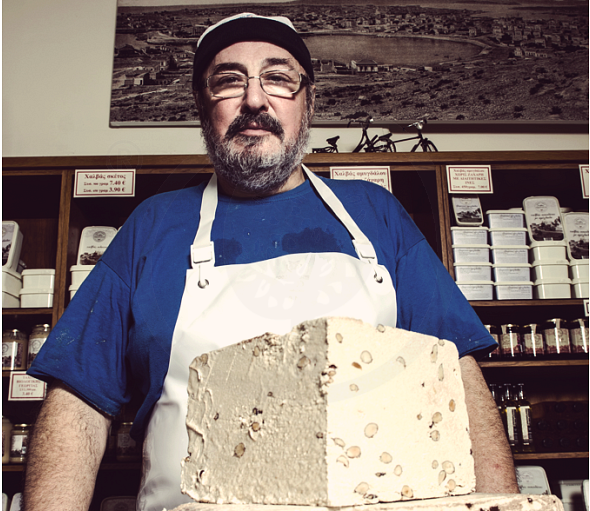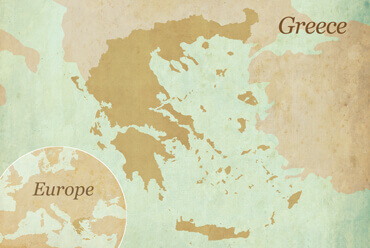Ingredients
- Tahini, sugar, corn syrup, almonds, vanilla.
Net Weight
450gGross Weight
480gWidth
13.8cmDepth
9.7cmHeight
7cmAwards
"Kosmidis-Gavrilis" halva was awarded the Quality Award from "Gastronomos" magazine of "Kathimerini" newspaper in 2008.
The history of the traditional halva workshop in Drapetsona began in 1924 when Kostas Mezardasoglou from Asia Minor came to Athens after the Asia Minor Catastrophe bringing with him the art of handmade halva. In 1986 the workshop passed into the hands of Nikos Gavrilis who – despite being a naval engineer - loved the art of making halva and continued the tradition he inherited with passion. Nikos Gavrilis is a sweet, noble man, with a vision, values and passion. He adores his work - this laborious art of halva making - and he is totally dedicated to it. With his presence, dominant, in every phase of production, his constant inspection of the ingredients used, his tireless participation in the kneading of the halva and the way he lovingly “caresses” the finished product, makes us realize that it is a product that requires love and devotion.

Attica was first inhabited during the Neolithic era and it has always had a central role in the historical events of Greece. Its mythical past is also of particular interest, since it was the city favoured most by the twelve Olympian gods. During ancient times, Athens, and Attiki in general was a great economic, political, intellectual and cultural force, culminating during the "Golden Age of Pericles".The Acropolis of Athens was built during that time, along with the architectural monuments of the Sacred Rock of the Acropolis and many other great buildings.The Peloponnesian War, the expansion of Alexander the Great’s empire, the Roman occupation, the spreading of Christianity, the Byzantines' contempt, the arrival of the Francs, Catalans and Venetians, and finally the period of the Ottoman occupation, all marked the history of Attiki, right up to the year 1834, when Athens was nominated capital, of the finally independent Greek state.
The landscape of Attiki is characterized by the Athenian blue sky, the sun and the glorious shades that the sunset brings out on its stone mass.Also worth mentioning, are the mountains that surround the basinof Attiki with their characteristic vegetation, the national parks, the forest of Kessariani, the wetlands of Mesogeia and the beautiful sandy beaches. One can also spot native and migratory birds, visit countless archaeological sites and walk along the narrow streets of the picturesque area of Plaka, admiring the balconies of its magnificent neoclassical buildings.
In Greek Mythology, legend goes that Dionysus, god of wine and merrymaking, entrusted the inhabitants of Attica with the cultivation of the grapevine and the art of winemaking. The terroir of Mesogia, Attica, renowned for its wines, is Greece’s oldest. It is where the celebrated grape variety “Savvatiano” is grown and where Retsina, the queen of Attica wines, reigns supreme. Retsina is under a Traditional Appellation certification as its unique, traditional traits guarantee a product of special taste and true Greek character. Apart from Mesogia, the region of Attica also includes the area of Piraeus which is Greece’s and the eastern Mediterranean’s largest port celebrated for its strategic and trading significance since ancient times. Today, it is Greece’s and the Greek economy’s largest hub of commercial activities and has the highest passenger traffic among European ports. The Prefecture of Attica is often a preferred destination for visitors as it combines countless, breathtaking vistas with a wide range of entertainment and culinary choices
.










